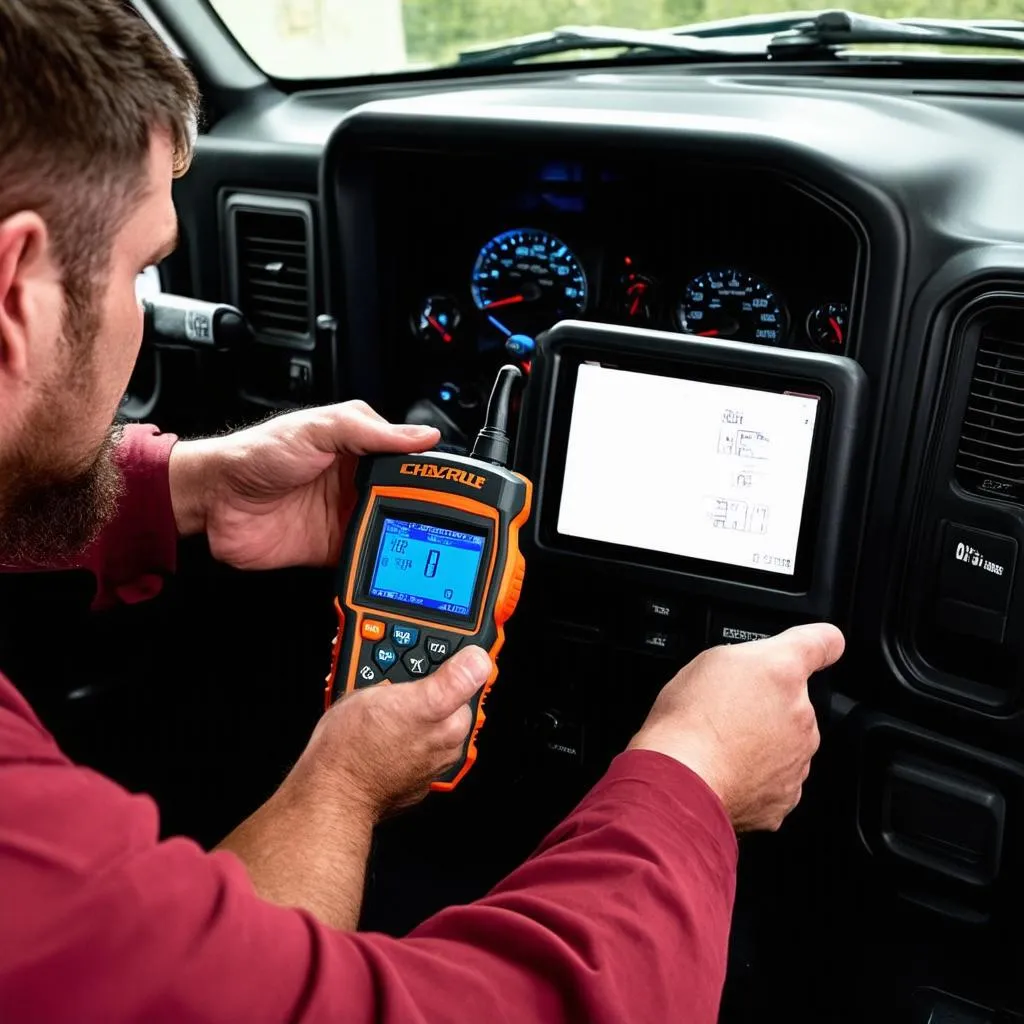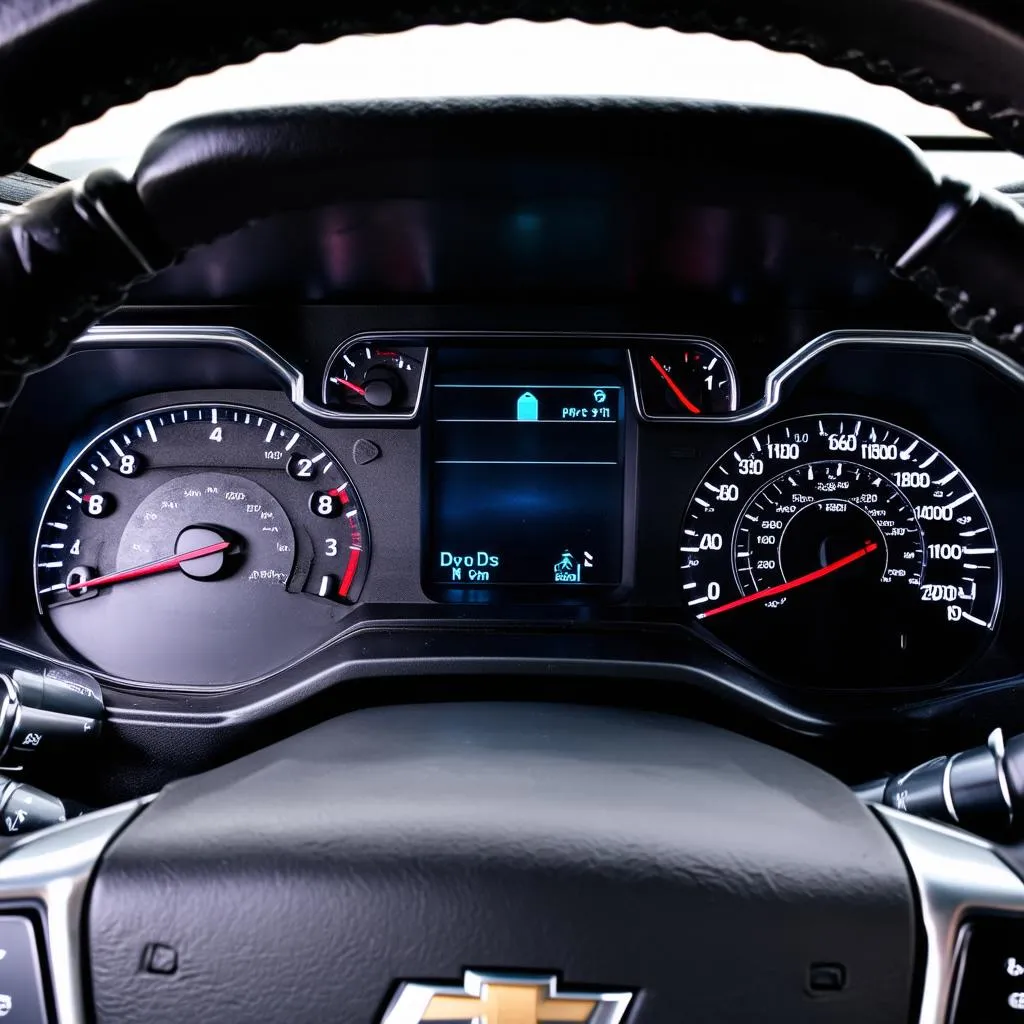Have you ever been driving down the road, enjoying the open air, when suddenly, your Chevy pickup starts acting up? The engine light flickers on, and you’re left wondering what’s wrong. You wish you had an OBD scanner to help diagnose the problem, but you don’t have one. Don’t worry! There are actually several ways to check codes on your Chevy pickup without an OBD scanner.
Understanding the Importance of Checking Codes
Checking codes on your Chevy pickup is crucial for understanding the health of your vehicle. Think of it like a doctor performing a check-up. Codes act as signals, telling you what’s going on under the hood. They can indicate everything from a minor sensor issue to a serious problem requiring immediate attention. Knowing these codes is like having a window into your car’s internal workings.
How to Check Codes Without an OBD Scanner:
The Classic Method: The “Blink Code” Technique
This method is often used in older Chevy pickups and requires patience and a bit of deduction. It involves watching the Check Engine Light for specific blinking patterns.
- Locate the Check Engine Light: It’s usually located on the dashboard, often near the speedometer.
- Start the Engine: Allow the engine to warm up.
- Watch the Check Engine Light: Count the number of blinks, followed by a pause, then more blinks. This sequence represents a code.
- Refer to a Code Manual: There are several resources online and in your Chevy owner’s manual that translate these blink codes.
The DIY “Jump Wire” Method
This method involves connecting a jumper wire between two specific terminals in your Chevy’s diagnostic connector, which is located under the dashboard.
Important note: This method might void your vehicle’s warranty, so proceed with caution. Always consult your Chevy owner’s manual or a trusted mechanic for guidance.
- Find the Diagnostic Connector: Refer to your Chevy’s owner’s manual for the location.
- Connect a Jumper Wire: Connect the wire between terminals 6 and 14 (consult your owner’s manual for specific terminal numbers).
- Turn the Key to the “On” Position: Don’t start the engine.
- Watch the Check Engine Light: The light will blink in a sequence, indicating codes.
Seeking Help From a Professional
If you’re unsure about the process or don’t feel comfortable performing either method, it’s always best to seek help from a qualified mechanic. They have the tools and experience to diagnose any issues accurately.
Remember: Ignoring warning lights and codes can lead to more significant problems down the line. It’s always better to address them promptly.
What to Do With the Codes:
Once you have a code, you can decipher it using a code lookup chart available online. This will help you understand the potential issue. You can then choose to:
- Try to fix the problem yourself: If the issue seems minor, you might be able to fix it yourself.
- Take it to a mechanic: For more complex issues, it’s best to consult a professional.
- Reset the code: Once you’ve addressed the problem, you can reset the code using an OBD scanner or by disconnecting your battery for a few minutes.
Common Questions
What are the most common codes on Chevy pickups?
Some common Chevy pickup codes include:
- P0300: Random/Multiple Cylinder Misfire Detected
- P0420: Catalyst System Efficiency Below Threshold (Bank 1)
- P0171: System Too Lean (Bank 1)
- P0174: System Too Lean (Bank 2)
Can I use a generic OBD scanner for Chevy pickups?
Many generic OBD scanners can work with Chevy pickups, but some may not be compatible with newer models.
How often should I check the codes on my Chevy pickup?
While it’s not necessary to check codes on your Chevy pickup regularly, it’s good practice to do so when you notice any strange behavior in your vehicle, such as a decrease in fuel efficiency, engine problems, or the Check Engine Light turning on.
Why is the Check Engine Light flashing?
A flashing Check Engine Light is a serious issue that requires immediate attention. It often indicates a misfire that can lead to engine damage if not addressed.
 Chevy Pickup Diagnostic Tool
Chevy Pickup Diagnostic Tool
Finding the Right Tool
To help you find the right diagnostic tool, we recommend checking out our selection of Dealership Level Scanners. These scanners are designed to provide accurate diagnoses and have a wide range of capabilities.
Need Help?
If you have any questions or need further guidance, don’t hesitate to reach out to us. Our team of experts is available 24/7 to assist you with any auto repair needs. Just send us a message on Whatsapp: +84767531508.
Conclusion
Checking codes on your Chevy pickup without an OBD scanner is possible, but it does require some knowledge and patience. By following these steps and understanding the importance of code analysis, you can get a better sense of your vehicle’s health and potentially avoid costly repairs in the future. Remember to always follow safety precautions and consult your owner’s manual or a qualified mechanic when necessary.
 Chevy Pickup Engine Light
Chevy Pickup Engine Light
Do you have any other questions about checking codes on a Chevy pickup without an OBD scanner? Leave a comment below, and we’ll be happy to help.